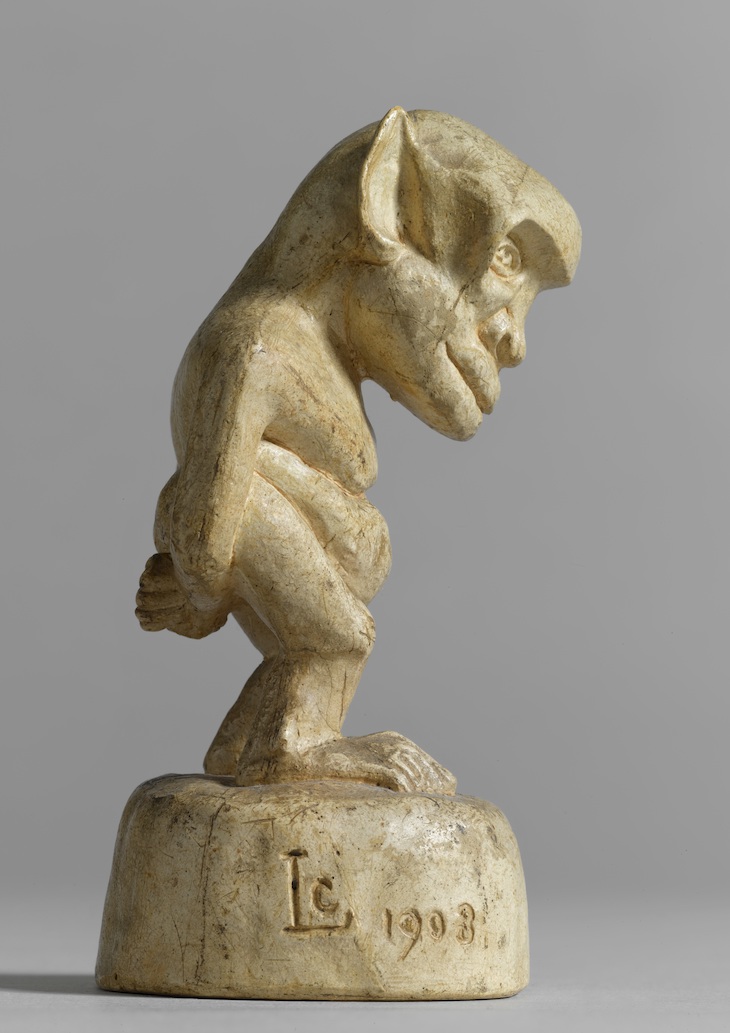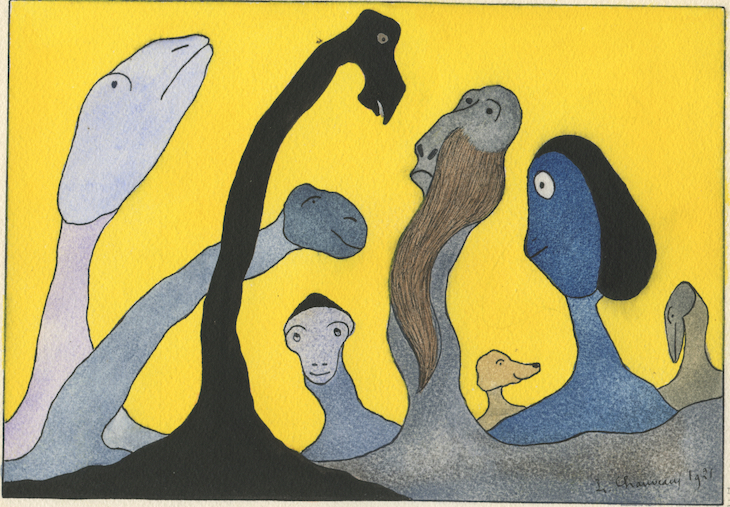A doctor by trade, Chauveau taught himself to sculpt around 1905, crafting fantastical beasts from plaster, bronze or wood that drew on medieval European and Japanese ideas of the grotesque. He was also, as this display attests, a prolific illustrator of children’s books. Find out more from the Musée d’Orsay’s website.
Preview the exhibition below | View Apollo’s Art Diary here

Monster (Self-portrait?) (1908), Léopold Chauveau. Photo: © Musée d’Orsay, Dist. RMN-Grand Palais/Patrice Schmidt
It was in his mid thirties while living in Versailles with his family, the surgeon Léopold Chauveau took up sculpture – probably on the advice of his close friend, the Nabi sculptor Georges Lacombe. It has been suggested that this gargoyle-like figure is his first self-portrait.

Tapahuac (1910), Léopold Chauveau. Photo © Musée d’Orsay, dist. RMN-Grand Palais/Patrice Schmidt
For the rest of his life, Chauveau would continue to add to his vast and motley menagerie of grotesque figures in plaster and wax. Cathedral gargoyles, and the monsters of Chinese and Japanese art, were his avowed influences – but it has also been suggested that he drew inspiration from pre-Columbian sculpture and medieval Flemish woodcarving.

Paysage monstrueux (1921), Léopold Chauveau. Musée d’Orsay, Paris; © All rights reserved
In the early 1920s, Chauveau finally abandoned his career as a doctor to devote himself fully to art, and he began to write children’s stories. It was around this time that he embarked on his vast series of Paysages Monstrueux – imaginative landscapes peopled with bizarre beasts in gouaches and watercolour.

Tante Louise (c. 1911), Léopold Chauveau. Photo © musée d’Orsay/Patrice Schmidt
Chauveau achieved some recognition for his writing, both for children and adults, but his drawings and sculptures remained largely unknown during his lifetime, and after his death he was forgotten. It was a large donation (from Chauveau’s grandson) of work to the Musée d’Orsay in 2017, which forms the basis of this exhibition, that brought his strange and singular universe to the attention of art historians once more.











![Masterpiece [Re]discovery 2022. Photo: Ben Fisher Photography, courtesy of Masterpiece London](http://www.apollo-magazine.com/wp-content/uploads/2022/07/MPL2022_4263.jpg)
Has the Fitzwilliam lost the hang of things?